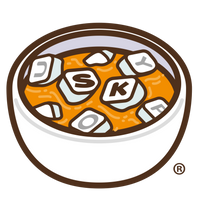Glossary of Mechanical Keyboards
Here are the most common terms and phrases you might come across in the world of mechanical keyboards. For beginners, the world of mechanical keyboards can be overwhelming with a plethora of jargon and terminology. This glossary will provide you with a comprehensive explanation on mechanical keyboards, covering everything from switches to keycaps, so you can navigate this world with ease.
Switch
A switch is the component that registers a keystroke. Mechanical keyboard switches are typically classified into three categories based on their actuation force: linear, tactile, and clicky.
Actuation force
Actuation force refers to the amount of force required to activate a switch. A higher actuation force means more pressure is required to register a keystroke.
Linear
Linear switches have a smooth keystroke with no tactile feedback or audible click. They are popular among gamers because of their quick response time and lack of distraction.
Tactile
Tactile switches provide tactile feedback when a key is pressed, allowing for more precise typing. They have a bump in the middle of the keystroke that provides a satisfying feedback.
Clicky
Clicky switches provide both tactile feedback and an audible click. They are popular among typists because of the satisfying sound and feedback they provide.
Keycap
A keycap is the top portion of a keyboard key that you press with your fingers. They come in different shapes, sizes, and materials, and can be replaced to customize the keyboard's appearance.
Stabilizer
Stabilizers are used to keep larger keys, such as the space bar, steady during typing. They come in two types: plate-mounted and PCB-mounted.
PCB-mounted
PCB-mounted stabilizers are attached directly to the circuit board, providing more stability and less rattle.
Plate-mounted
Plate-mounted stabilizers are attached to the metal plate that sits under the keys, providing less stability and more rattle.
Actuation point
The actuation point is the point at which the switch registers a keystroke. It is usually measured in millimeters.
Bottom-out
Bottom-out is when the key is fully pressed down, hitting the bottom of the switch housing. It is usually accompanied by a loud clack or thud sound.
Travel distance
Travel distance refers to the distance a key travels from the rest position to the bottom-out point.
Key rollover
Key rollover refers to the number of keys a keyboard can register at once. N-key rollover (NKRO) allows for every key to be pressed simultaneously without any missed keystrokes.
Ghosting
Ghosting occurs when a keyboard fails to register a keystroke, usually when multiple keys are pressed at once. Anti-ghosting technology prevents this from happening.
Firmware
Firmware is the software that controls the keyboard's functions and features. It can be updated to fix bugs or add new features.
Tenkeyless
Tenkeyless (TKL) keyboards lack a number pad, making them more compact and portable.
Hot-swappable
Hot-swappable keyboards allow you to replace the switches without soldering. This makes it easier to customize your keyboard without any technical expertise.
RGB lighting
RGB lighting allows you to customize the color and pattern of the keyboard's backlight. It's a popular feature among gamers and enthusiasts.
Backlight
Backlighting illuminates the keys in low-light conditions, making it easier to see the keys. Some keyboards have adjustable brightness levels and color options.
Keycap profile
Keycap profiles refer to the shape of the keycap. Different profiles provide different typing experiences, and some are more ergonomic than others.
Lubrication
Lubrication can be applied to switches to reduce friction and noise. It can also make the typing experience smoother and more satisfying.
O-ring
O-rings are small rubber rings that can be added to switches to reduce the sound and feel of bottoming out.
Group-Buy
A process where a group of people comes together to purchase custom or limited-edition mechanical keyboards or related items in bulk. The group buy is usually organised by a vendor or a community member to reduce the cost of manufacturing and distribution. During a group buy, vendor opens up a pre-order window for a particular keyboard design or layout, and group members place their orders and pay upfront. The vendor then collects all the orders and sends them to the manufacturer for production. Once production is complete, the group-buy items are shipped to the vendor, who distributes them to the group members.
